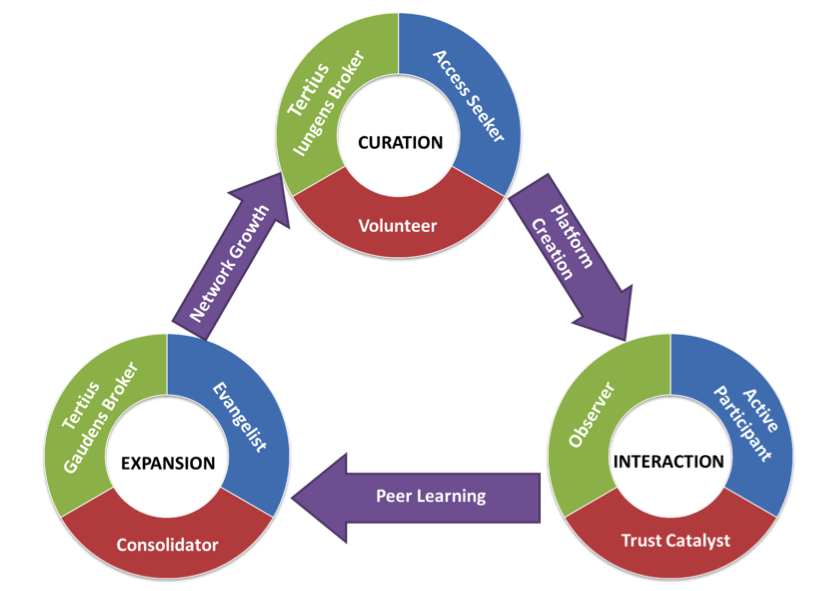Vibrant entrepreneurial ecosystems such as Silicon Valley, Route 128 are characterized by a free flow of experiential knowledge between expert and novice entrepreneurs. Experiential knowledge can provide much needed advice, mentoring and moral support to novice entrepreneurs, putting them on an accelerated path and fueling the ecosystem. In mature ecosystems like Silicon Valley, this is possible due to the prevalence of dense formal and informal networks. However, does this exchange of experiential knowledge occur spontaneously in emerging entrepreneurial ecosystems such as the software product industry ecosystem in Bangalore? If not, (how) can it be purposefully created?
The study aspires to answer these questions through an in-depth study of iSPIRT’s Playbook Roundtable initiative, which facilitates a conversation between expert entrepreneurs (EE) and novice entrepreneurs (NE) in a structured setting. Analysis reveals three distinct, self-reinforcing processes – Curation, Interaction and Expansion – that come together to create a vibrant and sustainable experiential knowledge network. Each of the ecosystem actors (novice entrepreneurs, expert entrepreneurs and the entrepreneurial connector i.e., iSPIRT) play a unique role in these three processes.
- Curation: Curation is a process through which a carefully selected group of novice entrepreneurs are introduced to an expert entrepreneur who has the deep experiential knowledge in a topic that is immediately relevant to the novice entrepreneurs’ business. In this process, the NE is an access-seeker, the EE is a volunteer and the connector (iSPIRT) acts as tertius iungens broker who brings together network members. Tertius iungens literally means the ‘third who joins’ and is a type of brokerage where the broker introduces two disconnected parties and facilitates direct interaction and knowledge transfer between them. The curation process creates a knowledge exchange platform between NE and EE.
- Interaction: The next process – Interaction – builds on the platform created by the curation process. Interaction is the process through which experiential knowledge transfer occurs between the EE and NE in the entrepreneurial ecosystem. In this process, the EE shares his/her own insights and creates an atmosphere for peer learning. In other words, the EE acts as a trust catalyst. The NEs on their part actively participate by bringing their business challenges into the discussion. The entrepreneurial connector plays the passive role of an observer. The outcome of this process is peer learning.
- Expansion: The peer learning resulting from the interaction between the entrepreneurs sets off the process of expansion. Expansion is a process through which more NE and EE in the ecosystem are brought into the experiential knowledge network. The NE who benefit from the peer learning become evangelists, bringing more entrepreneurs into the network. The EE also bring in new experts into the network but more importantly, they act as consolidators refining the content/format of the roundtable sessions based on feedback. The connector manages the new entrants in the network, actively mediating between them i.e., the connector exhibits a tertius gaudens brokerage orientation where it keeps the new entrants apart until a suitable platform is worked out to bring them together. This results in network growth which feeds back into the curation process by providing a larger pool of NE and EE to curate from.
The three processes are pictorially depicted in the Figure below. Together, they set up a virtuous cycle that strengthens the experiential knowledge network in the ecosystem.
 The insights from this study provide clear guidance on how to systematically create experiential knowledge networks in emerging ecosystems. It also highlights the important role played by entrepreneurial connectors such as iSPIRT in nurturing these networks.
The insights from this study provide clear guidance on how to systematically create experiential knowledge networks in emerging ecosystems. It also highlights the important role played by entrepreneurial connectors such as iSPIRT in nurturing these networks.













